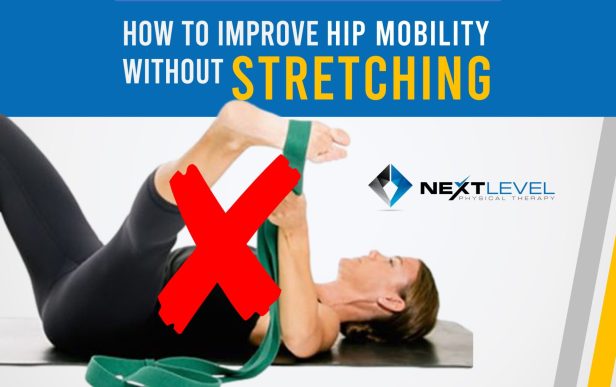Author: Dr. Artem Imnadze, DPT
Do you find yourself turning your entire body to try to look over your shoulder while driving? Or maybe you only feel your neck working even though you’re doing an ab workout. If so, you’re probably dealing with a restricted and overactive neck.
This is not so uncommon in a society that is stress driven and spends hours a day on computers and cell phones.
Unfortunately, many proposed solutions fail to eliminate the problem at the source and instead offer boring stretches that slap a band- aid on the symptoms. Maybe, you’ve been lucky enough to avoid the stretching craze but have been told you need to improve your posture and strengthening exercises such as face pulls are the solution. Neither of these options offers a viable solution to the culprit of restricted neck mobility and may even make matters worse.
Below are 5 exercises meant to target the culprit of restricted neck mobility which tends to be faulty breathing patterns, restricted rib cage mobility and being stuck in repetitive patterns of movement.
Note that these exercises are meant to be performed in the sequence laid out for maximal effectiveness.
#1. Zercher band Breathing
You may be wondering why the first step in restoring neck mobility involves expanding your upper back and breathing. Two important reasons. Firstly, your cervical (neck) extensor muscles, the muscles that help you look up at the ceiling and will resist your ability to look down and turn your head attach all the way down to the middle of your back. If you’re not attenuating to upper back mobility you will likely fall short. Secondly, that muscles that attach to the front and back of your neck as what are called “accessory breathing muscles.” Meaning the assist in moving your rib cage to allow your lungs to expand. If your rib cage is stiff and you can’t expand your rib cage in certain places your accessory breathing muscles will work even harder leading to overactivity of your neck muscles.
Start with the Zercher Band Breathing to improve rib cage mobility and allow expansion of the mid back musculature.
Perform 3-5 sets x 5 breaths
#2. Staggered Stance DB Curls
We’re doing biceps curls to get my neck moving? Hell yeah we are! In reality, the biceps curl is just a façade for what’s really being accomplished with this exercise. The arm position mimics that of the previous exercise, the act of curling the weight forces your to pull the shoulder down away from your ears and the slight rotation of the neck gives your neck some much needed movement. Those goal with this exercise it to maintain expansion of the rib cage and upper muscles. The rotation of the neck put the Upper Trap muscle (a common culprit in neck tightness) in a lengthened position. Breathe as instructed I the video to reinforce the position.
Perform 2-3 sets x 10 reps on the side that’s restricted (can perform both sides)
#3. Lower Body Rolling
The human spine is made up of 33 segments (26 moveable segments). To maintain healthy movement in any portion of your spine, you need to ensure that you retain segmental motion. This is the ability of each spinal segment to move independently of the next segment. When the spine begins to move as a unit versus segmentally is when your movement begins to look robotic and lacks fluidity (turning your entire body to look over your shoulder).
Lower body rolling is a great way to teach your body to segment spinal movement from the bottom up; initiating the movement through the hips and pelvis and finishing with the neck. Again, upper back and neck rotation are reinforced by the inhale at the end of the movement.
Perform 2-3 sets x 6 rolls on the side that’s restricted (can perform both sides)
#4. Rolling Arm Bar
Once you’ve built comfort and confidence moving your neck in more static or passive ways, it’s time to get things moving more actively. That is where kettlebell-based movements become an excellent tool. The rolling arm bar is must- do exercise for anyone looking to restore and maintain good neck movement.
In this movement, the kettlebell forces you to reach with the shoulder, thereby, maintaining expansion of the upper back. We used the same bottoms-up approach of restoring segmental spinal movement as the lower body rolling, but, this time we maintain gaze on the kettlebell to teach your body to active turn your neck through a full range.
Fatigue in the neck is a common result as you’re retraining your body how to move properly but ultimately you should feel improvement in baseline movement after performing this exercise.
Perform 2-3 sets x 6 rolls on the side that’s restricted (can perform both sides)
#5. Turkish Get Up
Overhead movement of the shoulder is intimately related to movement of the lower cervical spine. That is why you’ll frequently see weightlifters jut their head forward when they press a barbell overhead…it allows them to maintain the relationship between the mechanics of the shoulder and the neck. The Turkish Get Up is a movement that will allow you to couple these two areas of your body for optimal mechanics. The kettlebell will force you to reach the shoulder to maintain back expansion and those upper back muscles loose. Keeping your gaze on the kettlebell will allow you to match the normal mechanics of the shoulder and neck. Because you are looking in the upward direction you will maintain a lengthening position of the musculature in the front of your neck. This movement is great reinforcement of all the mechanics you worked to restore in the previous 4 exercises.
Perform 2-3 sets x 3 reps on the side that’s restricted (can perform both sides)
Give this 5-exercise routine a try to get your neck moving again! If pain is a limiting factor to performing these movements, it’s time you get checked out by a professional. Reach out to Next Level Physical Therapy to get set up with a free in-person or virtual Discovery session!



